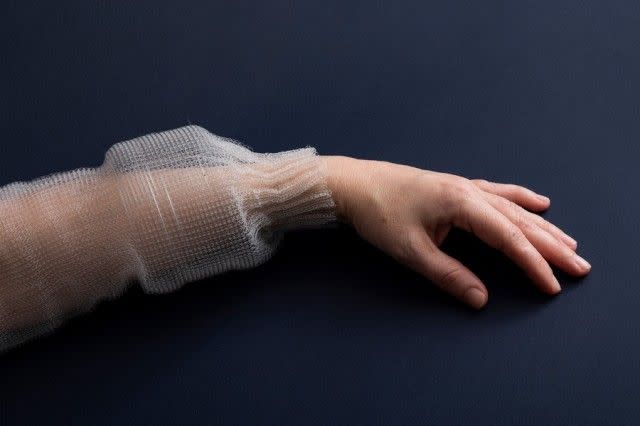Smart Fibers Could Turn Army Uniforms Into Wearable Computers
“Hearst Magazines and Verizon Media may earn commission or revenue on some items through the links below.”
The U.S. Army is developing smart fibers that can record, store, and transmit data.
By weaving microchips into the fibers of a uniform, the clothing takes on a dual role: protection, plus the ability to perform computational tasks.
The result could be uniforms that generate power, collect physiological data, and even alert others if the wearer is wounded.
We don't have cyborgs on the battlefield just yet, but the U.S. Army—in collaboration with the Massachusetts Institute of Technology (MIT)—developed a technology that brings human troops one step closer: smart clothing fibers that could transform uniforms into wearable computers.
✈︎ Don't miss our best-in-class military coverage. Join our squadron.
Researchers say that the Army could use the electronic textiles to power sensors; collect data on the wearer and his or her environment; and transmit that data back to headquarters. The fibers could also warn the wearer of dangers ahead—like chemical weapons attacks—and mark the wearer's location for the rest of the team, plus other nearby friendly forces.

Researchers at MIT's Institute for Soldier Nanotechnologies developed the fiber prototypes. The polymer fibers contain hundreds of tiny silicon microchips that, once electrified, can sustain a digital connection across tens of meters, according to the team's new paper, published earlier this month in the journal Nature Communications.
This fiber, the Army Combat Capabilities Development Command explains, "is thin and flexible, and can pass through a needle, be sewn into fabrics, and washed at least 10 times without breaking down."
It can also act as a digital storage device, with researchers cramming a "767-kilobit full-color short movie file and a 0.48-megabyte music file" on one length. The fibers can store that data for up to two months without power.

The Army also says that the fiber can power artificial intelligence applications, collecting data that an algorithm could later interpret to detect changes in both the wearer, and the wearer's environment:
After sewing it around the armpit of a shirt, the researchers used the fiber to collect 270 minutes of surface body temperature data from a person wearing the shirt, and analyzed how these data corresponded to different physical activities. Trained on these data, the fiber was able to determine with 96 percent accuracy the activity in which the person wearing the shirt was participating.
The fibers could also monitor heart rate, respiratory rate, muscle data, and other key health indicators that could warn headquarters of an imminent health crisis. The smart fabric could also determine whether a soldier has come into contact with chemical toxins. Muscle data, for example, could warn command if a soldier has been exposed to paralysis-inducing nerve agents.
A small external device controls the fibers at the moment, so the Army will next need to design a new chip that can act as a microcontroller from within the fiber, itself. "When we can do that, we can call it a fiber computer," the researchers say.
🎥 Now Watch This:
You Might Also Like

